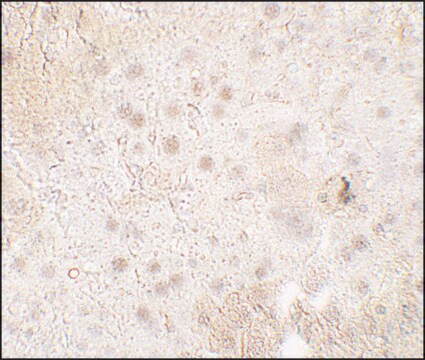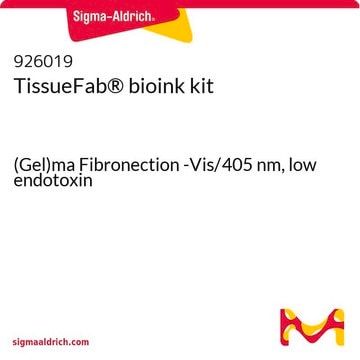ABC938
Anti-TMIGD1 Antibody
serum, from rabbit
Synonym(s):
Transmembrane and immunoglobulin domain-containing protein 1
About This Item
Recommended Products
biological source
rabbit
Quality Level
antibody form
serum
antibody product type
primary antibodies
clone
polyclonal
species reactivity
mouse, human
technique(s)
immunocytochemistry: suitable
immunohistochemistry: suitable
immunoprecipitation (IP): suitable
western blot: suitable
NCBI accession no.
UniProt accession no.
shipped in
dry ice
target post-translational modification
unmodified
Gene Information
human ... TMIGD1(388364)
General description
Specificity
Immunogen
Application
Apoptosis & Cancer
Adhesion (CAMs)
Western Blotting Analysis: A representative lot detected the overexpression of a c-myc tagged murine TMIDG1 in transfected HEK-293 cells, as well as the endogenous TMIDG1 in mock-transfected HEK-293 cells. Immunogen peptide blocking abolished the target band (Arafa, E., et al. (2015). Am. J. Pathol. In press).
Western Blotting Analysis: A representative lot detected a downregulated TMIGD1 level in HK-2 (human kidney 2) proximal tubular cells following TMIGD1 siRNA transfection or hydrogen peroxide treatment. Pretreatment with proteasome inhibitor Bortezomib (Cat. No. 504314) prevented H2O2-induced TMIGD1 downregulation (Arafa, E., et al. (2015). Am. J. Pathol. In press).
Western Blotting Analysis: A representative lot detected a ~45 kDa glycosylated TMIGD1 band in untreated HK-2 (human kidney 2) proximal tubular cell lysate, as well as a ~29 kDa deglycosylated TMIGD1 band in PNGase-F-treated HK-2 cell lysate (Arafa, E., et al. (2015). Am. J. Pathol. In press).
Immunohistochemistry Analysis: A representative lot detected a high TMIGD1 expression in mouse kidney proximal and distal tubular cells, while little TMIGD1 immunoreactivity was seen in podocytes (Arafa, E., et al. (2015). Am. J. Pathol. In press).
Immunoprecipitation Analysis: A representative lot immunoprecipitated highly ubiquitinated TMIGD1 from hydrogen peroxide-treated HK-2 (human kidney 2) proximal tubular cells (Arafa, E., et al. (2015). Am. J. Pathol. In press).
Immunocytochemistry Analysis: A representative lot detected the overexpression of a c-myc-tagged murine TMIDG1 in transfected HEK-293 cells by fluorescent immunocytochemistry staining (Arafa, E., et al. (2015). Am. J. Pathol. In press).
Quality
Western Blotting Analysis: A 1:500 dilution of this antibody detected TMIGD1 in 10 µg of H1299 cell lysate.
Target description
Physical form
Storage and Stability
Handling Recommendations: Upon receipt and prior to removing the cap, centrifuge the vial and gently mix the solution. Aliquot into microcentrifuge tubes and store at -20°C. Avoid repeated freeze/thaw cycles, which may damage IgG and affect product performance.
Other Notes
Disclaimer
Not finding the right product?
Try our Product Selector Tool.
Storage Class
12 - Non Combustible Liquids
wgk_germany
WGK 1
flash_point_f
Not applicable
flash_point_c
Not applicable
Certificates of Analysis (COA)
Search for Certificates of Analysis (COA) by entering the products Lot/Batch Number. Lot and Batch Numbers can be found on a product’s label following the words ‘Lot’ or ‘Batch’.
Already Own This Product?
Find documentation for the products that you have recently purchased in the Document Library.
Our team of scientists has experience in all areas of research including Life Science, Material Science, Chemical Synthesis, Chromatography, Analytical and many others.
Contact Technical Service





